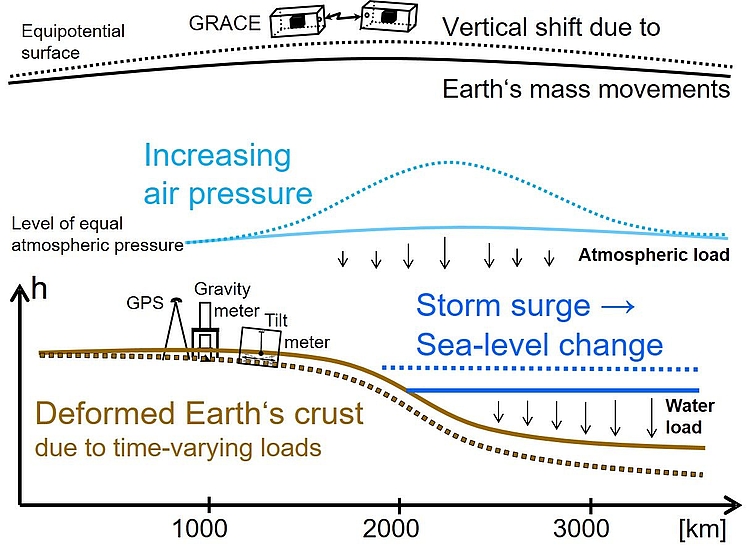Current Research Projects
Gravimetric Tides and Gravity Currents in the North Sea

| Led by: | Dr.-Ing. Ludger Timmen, Dr. Adelheid Weise |
| E-Mail: | timmen@ife.uni-hannover.de |
| Team: | Dr.-Ing. Ludger Timmen, Dr. Adelheid Weise |
| Year: | 2018 |
| Funding: | IfE, Germany’s Excellence Strategy – EXC-2123 “QuantumFrontiers” |
| Duration: | 2018-2021 |
The research group is investigating the gravity and deformation (tilt) effect caused by time variations of the mass distribution in the atmosphere and in the sea. It has to be distinguished between the direct Newtonian attraction effects and indirect loading effects. The latter part is accompanied by a vertical shift and a tilt of the sea floor as well as the land surface, especially along the coast or on islands, because of the elasticity of the solid Earth’s crust. Such a vertical ground displacement is associated with an absolute height change of the gravimeter w.r.t. the geocenter. The combined observation of gravity and tilt changes allows the separation of signals due to attraction and load deformation.
Besides the tides also non-tidal phenomena change the masses in the atmosphere and in the sea (wind surges, weather changes).
Since 2018, we record gravity and tilt variations on Helgoland, which is the best location in the North Sea aiming at rather small loading effects, which are largest during extreme high water conditions (storm surges).
The specific aim here is to
- validate/improve loading models (North Sea) as applied to the GRACE-FO satellite mission to avoid atmospheric and oceanic aliasing in the GRACE data analysis for the monthly products;
- improve reduction models for terrestrial gravimetry applied in nearcoastal groundwater-gravimetry projects.




